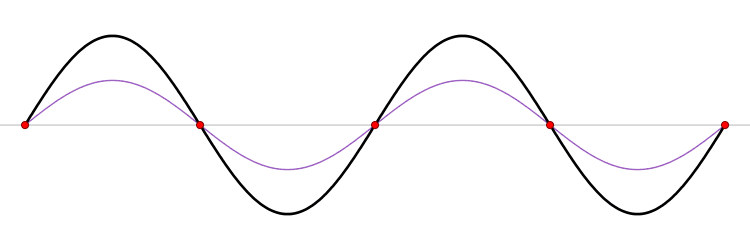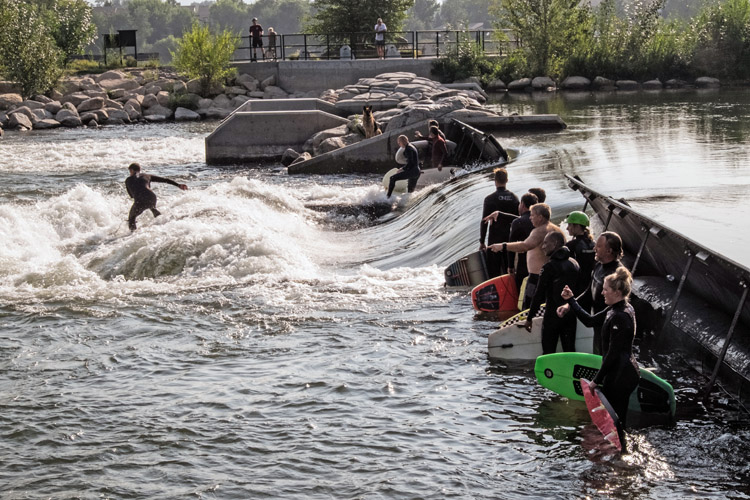A standing wave is often referred to as a stationary wave or seiche.
Standing waves are a virtually endless group of waves that bounce up and down on an enclosed or partially bounded water body.
So, what are the properties of standing waves?
Technically speaking, they are the sum of two propagating waves traveling in opposite directions.
In other words, a standing wave is a combined wave of two opposite waves with the same amplitude and wavelength.
The intersection points between the opposite waves are called nodes (red dots below), and the positions of maximum amplitude are named antinodes.
A Visual Example
Here's a standing wave animation:

You may easily observe the behavior and movement of stationary waves in a laboratory.
There are specially designed water tanks that allow scientists to generate these ripples artificially.
To create a standing wave, all you need to do is send a wave train across a confined container against its wall.
You'll notice that the reflected wave will superimpose upon the opposite waves, doubling the amplitude.
A seiche produces an optical illusion of movement. However, actually, it only oscillates and never moves forward or backward.
Stationary waves can be difficult to spot in lakes and oceans, mainly due to their long wavelengths.
But they can also be seen in the ocean, rivers, lakes, swimming pools, reservoirs, harbors, and bays.
A Mid-19th-Century Discovery
The phenomenon was first noticed and studied in 1831 by Michael Faraday, an English scientist who observed the formation of standing waves on the surface of a liquid in a vibrating container.
Later, in 1890, François-Alphonse Forel, a Swiss hydrologist, pioneered scientific observations of standing waves in Lake Geneva, Switzerland.
And because he concluded that waves were swaying back and forth, he named it "seiche," a Swiss-French expression.
Stationary waves are a relatively rare event in the world's oceans. They have been observed in the Baltic Sea, the Adriatic Sea, and Japan.
They are more likely to occur in lakes - for example, Lake Erie - due to local winds, floods, drastic changes in atmospheric pressure, tsunamis, and earthquakes, and may generate waves of up to 15 feet.
Standing Waves and Surfing
Surfers often refer to river waves and indoor stationary waves as standing waves.
But, even though all these ripples stay in the same place all the time and do not move forward, they all represent different concepts.
So, from a scientific perspective, river and indoor stationary waves are not exactly standing waves. Instead, they could be called static waves.
You can't surf a proper standing wave because it never breaks and because you and your board will indefinitely bounce up and down.
